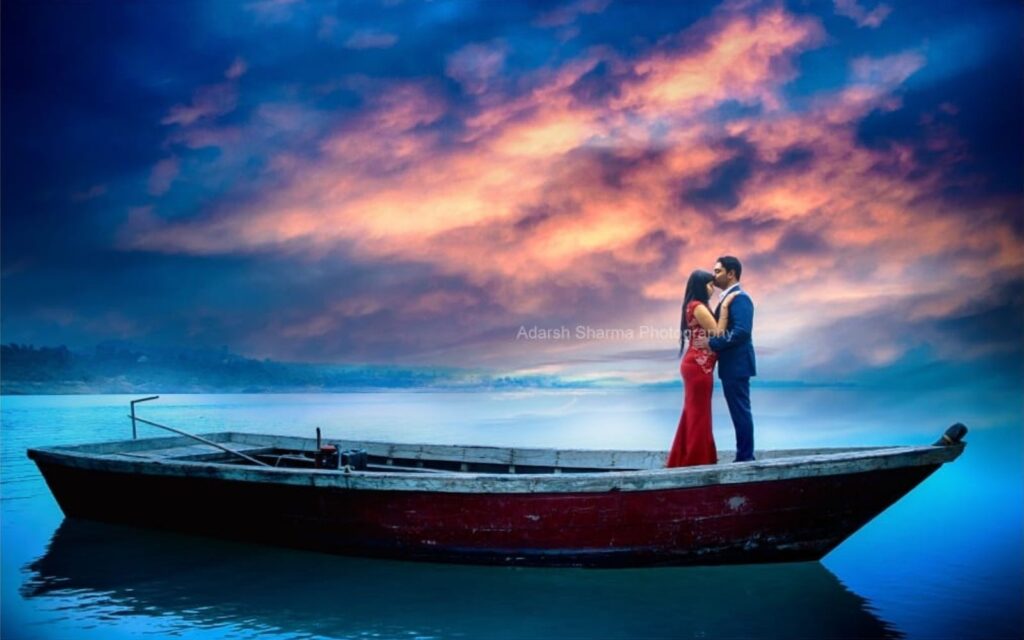
Guide to Punjabi Wedding Rituals
Guide to Punjabi Wedding Rituals
Punjabi weddings, renowned for their grandeur and exuberance, are a vibrant tapestry of rituals, customs, and traditions that reflect the rich cultural heritage of the Punjabi community. From the lively pre-wedding ceremonies to the elaborate post-wedding celebrations, a Punjabi wedding is a spectacle of joy, music, and love.
The journey of a Punjabi wedding typically begins with the Roka ceremony, where the families of the bride and groom formally meet and agree to the union. This is followed by the Chunni ceremony, where the groom’s family presents the bride with a red or pink chunni (headscarf), symbolizing her acceptance into their family. The next significant event is the Sagai or Engagement ceremony, where the couple exchanges rings amidst the blessings of their families.
As the wedding day approaches, the Sangeet ceremony adds an element of fun and frolic. This musical night is dedicated to dance performances, singing, and merriment, with friends and family coming together to celebrate the upcoming union. The Mehendi ceremony follows, where the bride’s hands and feet are adorned with intricate henna designs, symbolizing beauty and auspiciousness. The Mehendi night is another occasion for music and dance, making it a lively prelude to the wedding day.
On the day of the wedding, the rituals kick off with the Vatna ceremony, where a paste made of turmeric, gram flour, and mustard oil is applied to the bride and groom to enhance their beauty. This is followed by the Chooda ceremony, where the bride is adorned with a set of red and white bangles, symbolizing her newly married status. The Kalire ceremony follows, where friends and sisters tie decorative ornaments to the bride’s chooda, signifying good luck and prosperity.
The main wedding ceremony, known as Anand Karaj, takes place in a gurudwara, the Sikh place of worship. The couple takes their vows in the presence of the holy scripture, Guru Granth Sahib, and seeks the blessings of the Almighty. The ceremony is marked by the reading of hymns, the exchange of vows, and the sharing of Karah Prasad, a sweet sacrament. The highlight of the Anand Karaj is the tying of the sacred knot, the laavaan, symbolizing the eternal bond between the bride and groom.
Post-wedding, the Doli ceremony concludes the festivities. The bride bids an emotional farewell to her family as she leaves for her new home, signifying the beginning of a new chapter in her life. The couple seeks the blessings of the elders, and the groom officially brings his bride home.
In the midst of these beautiful traditions, shopping plays a pivotal role in ensuring the perfect execution of a Punjabi wedding. Here are some essential shopping tips to navigate the colorful world of Punjabi weddings:
1. Traditional Attire:
– For the bride, the selection of the wedding attire is a momentous decision. Traditional Punjabi bridal wear includes vibrant lehengas or suits in rich colors like red, pink, or orange. The groom usually opts for a sherwani or kurta paired with churidar or traditional Punjabi pajama.
2. Jewelry:
– Punjabi brides adorn themselves with exquisite jewelry, including elaborate necklaces, earrings, maang tikka, and nose rings. Grooms complement their attire with traditional accessories like a turban, kalgi (ornamental plume), and a bejeweled sword.
3. Footwear:
– Comfortable and stylish footwear is essential, especially considering the extensive rituals and ceremonies. Brides often choose intricately embroidered juttis, while grooms opt for traditional Punjabi footwear like Punjabi juttis or formal shoes.
4. Mehendi Designs:
– Mehendi is an integral part of a Punjabi wedding, and choosing the right Mehendi artist is crucial. Brides often prefer intricate designs that tell a story or hold sentimental value, while grooms may choose simpler patterns.
5. Decorative Items:
– To enhance the aesthetic appeal of the venue, consider shopping for decorative items like flowers, drapes, and lighting. Traditional Punjabi motifs and vibrant colors can be incorporated to create a festive ambiance.
6. Catering and Gift Items:
– If you’re involved in organizing the wedding, paying attention to catering and gift items is crucial. Traditional Punjabi cuisine, including sarson da saag and makki di roti, is a must. Additionally, thoughtful gift items for guests and family members add a personal touch.
7. Music and Entertainment:
– Ensure the availability of a skilled DJ or live music band for the Sangeet and other musical events. Punjabi weddings are known for their energetic dance performances, so having the right music is essential.
8. Photography and Videography:
– Capture the essence of the celebrations by hiring a professional photographer and videographer. Punjabi weddings are a treasure trove of candid moments, and preserving them ensures lasting memories.
In conclusion, Punjabi weddings are a beautiful blend of tradition, joy, and love. The rituals, from pre-wedding ceremonies to the main event and post-wedding celebrations, create an unforgettable experience for the couple and their families. With careful planning and attention to detail, coupled with these shopping tips, one can ensure a Punjabi wedding that is not only visually stunning but also deeply meaningful and culturally resonant.
